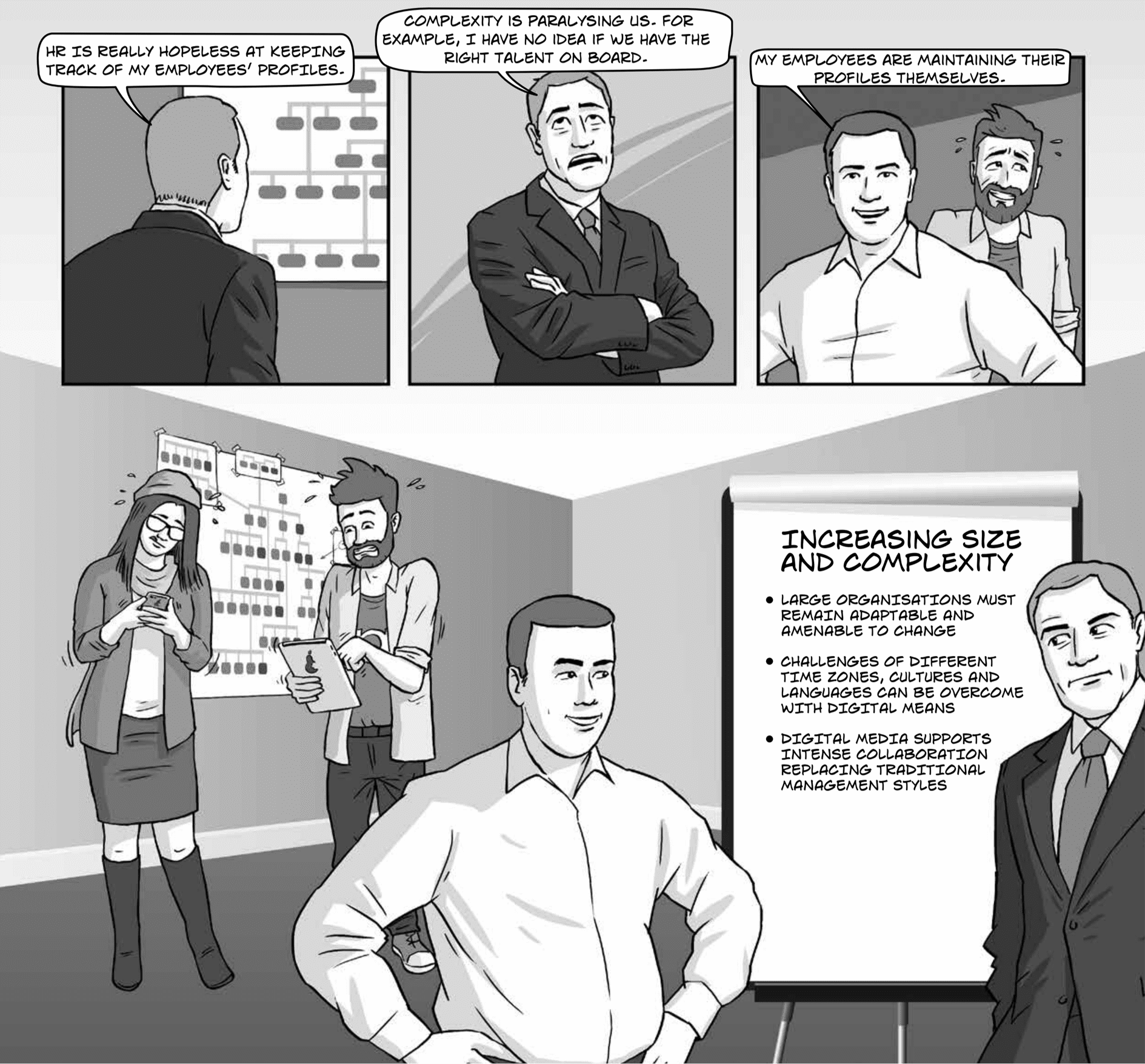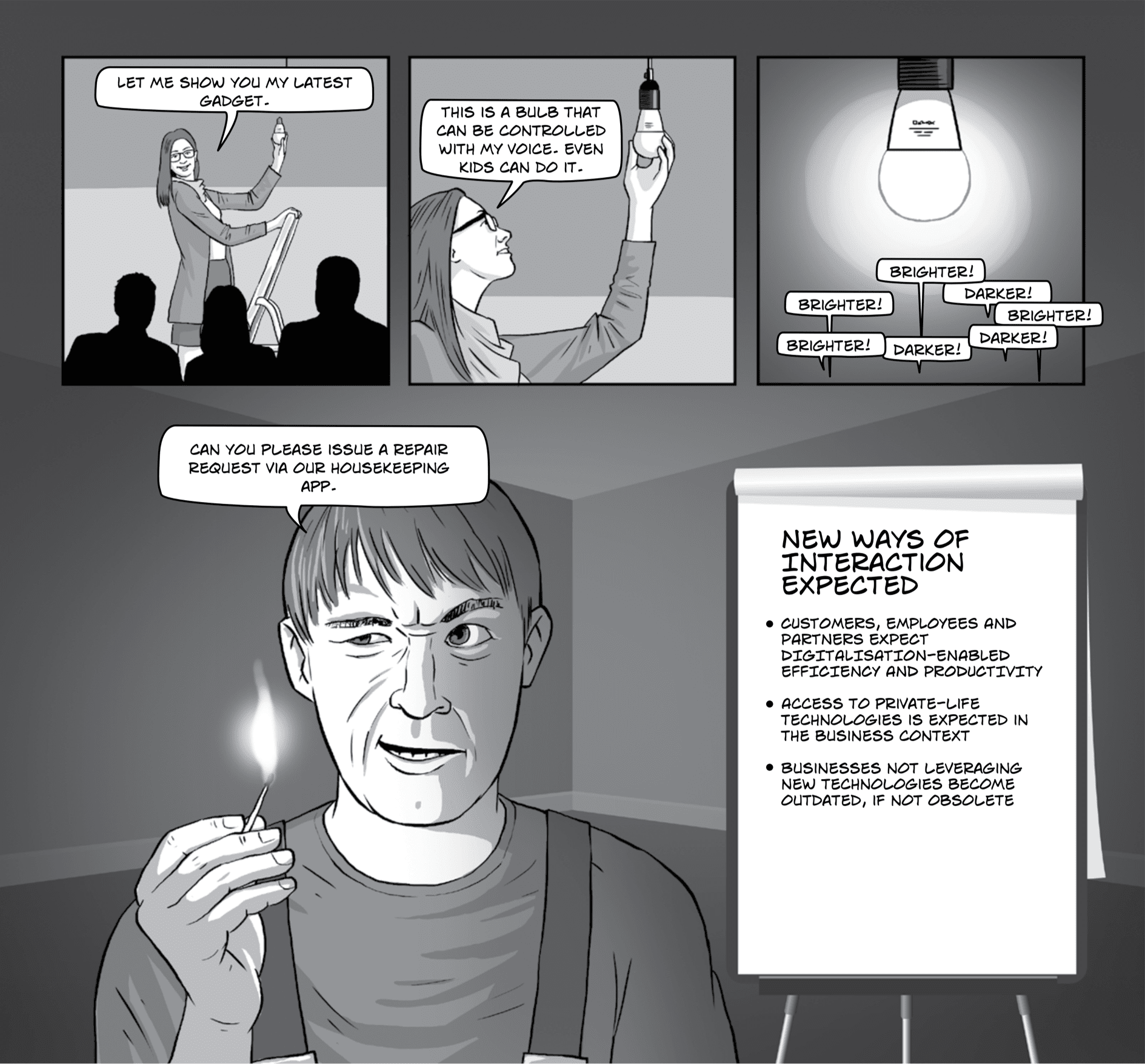Companies have their limitations in the task of coping with growth. They pay for additional growth with inefficiency, with the consequence that profits and sales can no longer be easily increased by sheer growth. In the digital age, large companies are challenged to break through this limit by more effective means of communication, improved data management and automated processes, while digital platforms enable smaller companies to organise themselves into networks to jointly implement large projects.
Continue readingChapter 2: Digital Makes Businesses Robust
The previous chapter discussed how digitalisation brings a new kind of relationship between
companies, customers, employees and suppliers, resulting in new business models. These
business models are increasingly replacing established models from the nineteenth and twentieth
centuries, creating large pressure for companies to act differently. In addition to achieving the main
objective of better market positioning, these changes can also offer other desirable results, such as
the opportunity for companies to be far more efficient and sustainable as a result of the digital
transformation.
1.4 New Ways of Interaction Expected
Over the past couple of decades, all our private lives have been significantly affected by the advent of new technologies, with everpresent access to PCs, mobile phones, smartphones, tablets and, very soon, virtual reality devices. We can surely expect this trend to continue and we will no doubt be eager to reap the convenience offered by such consumer electronics, albeit often ignoring their impacts on data protection. Businesses have capitalised on this trend and have used these new devices as effective channels to communicate with their customers.
Continue reading1.2 New Rules of Business
Devastation caused by powerful earthquake shocks can often be drastic and far-reaching. The strongest earthquake in Valdivia, Chile (1960), had a magnitude of 9.5 and was felt in Hawaii, while the deadliest earthquake in Shaanxi, China, killed nearly a million people. Shocks are typically unexpected and cause contrasting impacts due to differences in prevailing environments. Many aspects of digital disruption are comparable to shocks from incidents such as earthquakes. Powered by the rapid emergence of a wide variety of affordable technologies and consequential changes in customer behaviour, major movements are taking place in the environments that businesses operate in – creating digital shocks.
Continue readingConclusion
It is now a foregone conclusion that digitalisation is shaking up our lives and the business world in a monumental way. While new entrants, the digital start-ups, are born with most of the traits needed to succeed in the digital era, the incumbents, the established large organisations, often find themselves struggling to get the right foothold, the right strategy and the entry points to reinvent themselves as market leaders in the digital era…
Continue reading1.1 Technology Enables Digitalisation
The Cattedrale di Santa Maria del Fiore (also commonly known as Il Duomo di Firenze, or Florence Cathedral, Italy) is an extremely high calibre feat of engineering that transformed the engineering standards of the day. The dome of the church, nearly 150 feet across, was the largest of its time and remains the third-largest in the world to date. Interestingly, at the start of the construction project there was no viable technology to build the huge dome, which had been conceived architecturally, yet the highly ambitious project sponsors launched the project hoping that the right technology would appear at the right time to finish the dome.
Continue readingChapter 1: Digital Empowers New Thinking
For decades the deployment of information and communication technology (ICT) in business contexts and the subsequent exploitation of its efficiency-driving capabilities have transformed and sometimes revolutionised business models. ICT has driven completely new products and services into the market, as well as enabling increasingly automated operating models. Enterprises have greatly leveraged ICT to gain a competitive advantage.
In recent years, the notion of a digital business has emerged. Radically game-changing developments have enabled the digitalisation of businesses, usually creating nothing less than their comprehensive transformation.
11.1 Modelling at the Project Level
This section addresses the structuring of a digital initiative at the project level. An enterprise’s digital transformation is executed via a sequence of smaller, yet coordinated transitional steps in the form of individual business projects. Contrary to traditional project and business analysis techniques, a digital methodology must meet several important criteria.
Continue reading






